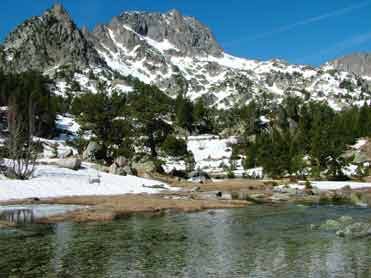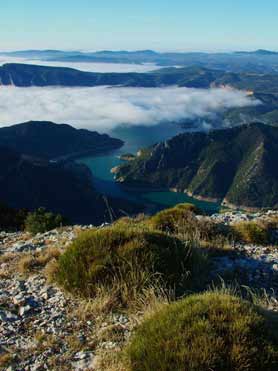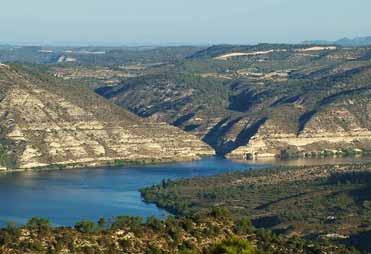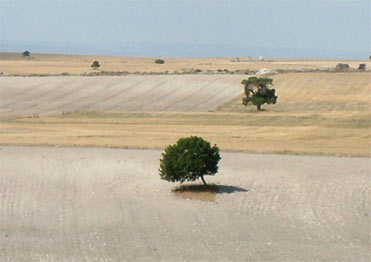Birding in Catalonia – Part 1
Catalonia, or Catalunya, in the north-east corner of Spain, is the main overland gateway into the Iberian Peninsula from the rest of Europe. A glance at the statistics will tell us that around 7 million people inhabit its 32,091 km², at an average density of 190 persons per km², and that it is an industrialised region with a coastline largely developed to accommodate mass tourism.
Not precisely a beacon for the foreign birder, or so it would seem. But then there are the other statistics: the new breeding bird Atlas of Catalonia reveals 232 species of breeding birds – more than any other region of a comparable size anywhere else in Spain – inhabiting its numerous and varied biotopes, including wetlands of International importance, high mountains, Mediterranean type sierras & lowlands, rocky coasts & headlands, and steppes.
Catalonia`s Mediterranean coastline, for example, has 3 very interesting wetland areas, the most important of which is undoubtedly the Ebro Delta. This must be the star attraction for any visiting birder wanting to see gulls and terns, including the rare Slender-billed and Audouin`s Gulls, Gull-billed and Caspian Terns, along with a wide variety of herons, ducks and waders such as Squacco Heron, Little Bittern, Glossy Ibis, Great White Egret, Red-crested Pochard, Collared Pratincole, Kentish Plover, migrating Marsh Sandpipers and Temminck`s Stints and a few miscellaneous items such as Purple Gallinule, Greater Flamingo and Savi`s Warbler. Furthermore, its impressive list of wintering and migratory birds means that it`s not to be forsaken at any time of the year.
The Llobregat delta, on the very edge of Barcelona airport, also presents itself, although on a much smaller scale, as an interesting proposition for a 2 or 3 hour visit, with excellent hides overlooking scrapes which never fail to turn out rarities year after year. Last but not least there is the Aiguamolls de l`Empordà in the north of the region, intensively managed to enhance its wildlife interest and well placed to receive those more easterly migrants which rarely make landfall elsewhere along the coast. It`s also something of a Mecca for spring crake hunters (Spotted, Little and Baillon`s).
to be continued….
Posted in Photos and Places | 2 Comments »
The Aigüestortes National Park was declared as such just over 50 years ago, and became Catalonia‘s first and only National park. It’s a marvellous place for trekking among the most breathtaking high mountain scenery in the central Pyrenees: dozens of lakes, rugged peaks, pine clad valleys and slopes and gushing rivers.

There are two main entrances into this National Park: one is via the Boí valley in the west, with its World Heritage Romanic churches, and the other is via the village of Espot in the east. Last year Birdinginspain.com led a group for Naturetrek to the Aigüestortes NP.
We stayed at Roca Blanca, Espot. And what a great time we had!
Black Woodpecker, Lammergeier, Capercaillie, Citril Finch, Ring Ouzel, Scops Owl (calling outside the hotel!), Dipper, Golden Eagle, Crested Tit, Crossbill, and even an Iberian Chiffchaff (the first possible breeding record for Catalonia!). And then there were the non-birds like Apollo Butterfly, Camberwell Beauty, Alpine Marmot and Chamois, and buckets of fresh air!
But don’t take my word for it: look at the itinerary on the Birdinginspain.com website and read the Naturetrek Catalonia Trip Report for 2007 for yourself.
Posted in Photos and Places | No Comments »
Does anybody know where the photo below was taken?

I suspect not, so I’ll provide some clues:
It’s part of a natural birding hotspot with more than 120 species of breeding bird in a 25 kilometre radius.
The highest peak reaches up to 1668 metres. It is not in the Pyrenees.
Within the hotspot there are drylands with breeding Lesser Kestrels, Little Bustards, Black-bellied Sandgrouse, etc.
There are also birds of wetland areas such as Purple Heron, Little Bittern, Penduline Tit…
In the mountains there are Bonelli’s Eagles, Lammergeiers and Griffon Vultures.
It’s somewhere in Catalonia.
Any guesses? Why not send me an e-mail and see if you’re right?
Posted in Photos and Places | No Comments »
It could be said that the village of Faió is twice hidden. Once when the construction of the Riba-Roja reservoir flooded the old village, which was relocated on higher ground nearby. And twice, even now in the 21st Century, when the solitude of the village is pierced more by the River Ebro than by the winding roads that lead to it.

This is a part of northeast Spain that is ideal for those who like birding at their own pace. Stop now and then to admire the lonely hermitages, bee-eaters, rocky crags perhaps inhabited by the Blue Rock Thrush or a shy pair of Black Wheatears.
Stroll among the scented pinewoods listening to Bonelli’s Warblers, Sardinian Warblers and Crested Tits, stand on top of a breezy hill to watch for the Short-toed Eagle, the Griffon Vulture, and maybe even a Golden Eagle. Then approach vertical riverside cliffs, domain of Peregrine Falcons, Alpine Swifts, Egyptian Vultures and more.
This was a site of intense fighting during the Spanish Civil War. Faió was an important piece of the aptly named Battle of the Ebro. It’s hard to believe that such a tranquil setting could have had such a turbulent 20th Century.
Posted in Photos and Places | No Comments »
The Monegros, Ebro Valley. The most arid part of northern Spain.

This is still one of the best birding areas in northeast Spain for dryland, or steppeland, birds. Calandra larks, Lesser Short Toed larks, Short Toed larks, Lesser kestrels, Black-bellied Sandgrouse, Little Bustard and even a relict population of Great Bustard inhabit this seemingly barren landscape.
Alas, apart from birders and a handful of naturalists, the Monegros are unloved. Most decision-makers would rather see thousands of hectares of transgenic maize, or better still, something like “Las VegasII” – a 2,000 ha leisure complex with 32 hotels, golf courses, all in the middle of the semi-desert.
And they say the wildlife won’t be affected.
Posted in Photos and Places | No Comments »




